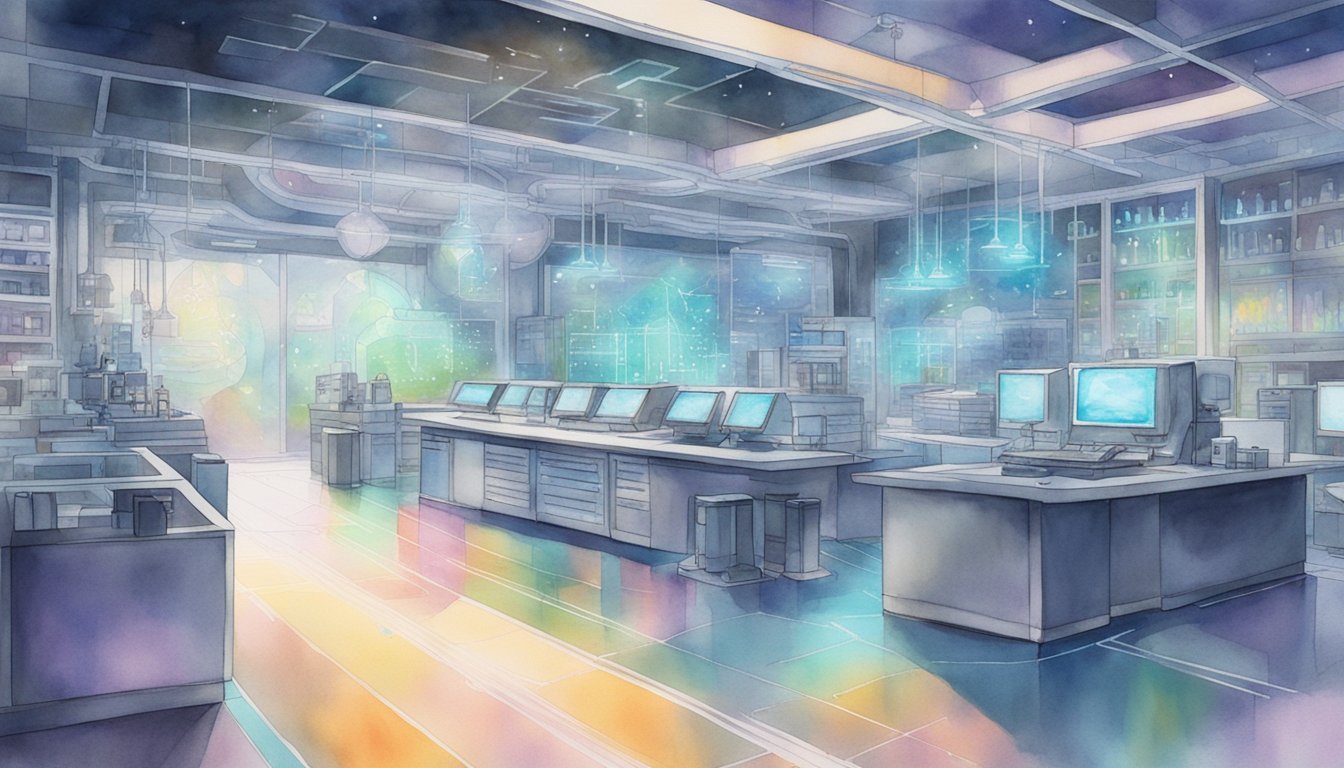Foundations of Holographic Storage
The inception of holographic storage has revitalized the pursuit for advanced data solutions, combining the principles of holography and modern materials to offer potentially immense storage capacities.
Understanding Holography
Holography is an imaging technique that records the light scattered from an object and presents it in a way that appears three-dimensional. The technique employs lasers to create the hologram, an interference pattern that captures all the information needed to reconstruct the image of the original object. Unlike traditional photography, holography encodes both the intensity and the phase of light waves, thus constructing a more complete representation of a scene or object.
Principles of Holographic Data Storage
Holographic Data Storage (HDS) operates on a similar principle as holography but with a focus on storing digital data. A spatial light modulator converts digital data into optical information, which interacts with a coherent laser beam. The resulting interference pattern is recorded in a photosensitive optical material—often a crystal or polymer—creating a volumetric data storage system. Unlike traditional hard disk drives that store information on a surface, holographic storage records data throughout the medium’s volume, improving storage density.
Materials and Technologies
Crucial to HDS is the choice of materials which need to exhibit properties conducive to the photorefractive effect, a phenomenon where the material’s refractive index changes upon exposure to light patterns. These crystals or photopolymers must have high dynamic range, high diffraction efficiency, and longevity. A critical aspect of technology involves the use of a laser beam and optic systems to accurately generate and focus light patterns, and a detector to retrieve the data. A precise control of laser light and the development of electro-optic crystalline materials are avenues that push the boundaries of optical data storage, propelling HDS toward fulfilling the industry’s durability requirements and high-density ambitions.
Holographic Storage in Practice

Holographic storage technology is not just a concept but a developing reality with specific applications and significant future potential. This section examines how holographic storage is used today and what the future might hold for this innovative technology. Holographic storage is currently utilized in specialized fields such as data archiving and high-capacity storage solutions, offering advantages like increased speed and density compared to traditional storage methods. As research progresses, the integration of lk99 technology innovations could further enhance holographic storage by improving material efficiency and data retrieval processes. This evolution may lead to broader commercial adoption, revolutionizing the way information is stored and accessed in the future.
Modern Applications and Developments
Holographic storage has found its place in data centers where performance and capacity are critical. Microsoft Research Cambridge has been exploring the use of holographic data storage for cloud services. Their Project HSD aims to utilize holography for warm data – data that is accessed infrequently but cannot be archived. Unlike traditional storage systems that only use the surface of media, holographic storage devices utilize the entire volume of the storage medium, dramatically increasing the data storage capacity. The parallel nature of the technology allows for fast access rates, essential for cloud-based applications.
Researchers have also focused on improving the precision and reliability of the reference beam, which ensures that data pages are accurately read from the storage medium. By employing sophisticated lasers and optics, advances are made towards cost-effective and large-scale storage options capable of handling the growing influx of data from artificial intelligence and machine learning workflows.
Challenges and Future Prospects
While the promise of storing zettabytes of data is tantalizing, challenges such as optical distortions and the precision required to read and write data remain. High-end cameras are being developed to record and read the holograms with more accuracy, and polymer materials are being investigated to serve as better mediums for the storage of 3D data pages.
Ant Rowstron and Benn Thomsen, researchers at Microsoft Research, are looking at holographic storage as part of a more extensive investigation into next-generation optical storage technologies which includes projects like Project Silica. As data centers continue to crave more capacities and faster access rates, holographic storage presents itself as a compelling solution. The technology is not only suitable for cloud storage but is also promising for archival storage, which benefits from the read many nature of holograms, allowing multiple reads without wearing out the medium.
Dushyanth Narayanan, a distinguished engineer at Microsoft, emphasizes the significant shift towards more layered and 3D storage solutions, as deep learning and other data-intensive applications continue to evolve. Moving forward, the integration of holographic storage in storage systems, including Microsoft Azure, could lead to more availability and cost-effective data management, providing a strategic advantage in an increasingly data-dominated world.

